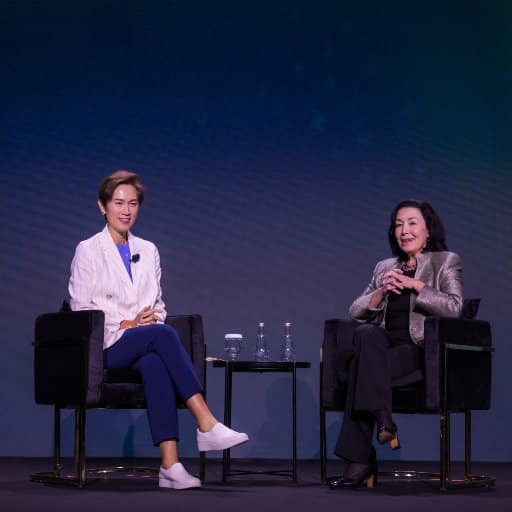Sydney, Thursday 9 May 2024 – Generative AI has quickly taken hold across Australian workplaces, with employees embracing a range of these technologies to enhance their productivity and creativity. Data published today by Microsoft in its fourth annual Work Trend Index – and the first joint report issued with LinkedIn – provides a comprehensive view of how AI is not only reshaping work, but the labour market more broadly. To coincide with the launch, Microsoft has also announced new innovations in Copilot for Microsoft 365 to provide prompting guidance and tailored support.
The Work Trend Index combines survey data from 31,000 knowledge workers and leaders across 31 countries, as well as trillions of productivity signals, telemetry data and LinkedIn jobs and labour data to show how AI is becoming more ubiquitous in the workplace.
“2024 is the year AI at work becomes real,” said Lucy Debono, Modern Work Business Director, Microsoft Australia and New Zealand. “Organisations that apply AI to drive growth, manage costs, and deliver greater value to their customers will pull ahead. The data also shows that AI will play a major role in the labour market, with greater value placed on AI – both as a skillset and aptitude among job seekers, and for its ability to reshape workflows so employees can enjoy their work more.”
The Work Trend Index reveals three key themes and actions to take when it comes to AI’s implications for work:
- Employees want AI at work – and won’t wait for companies to catch up
Australian workers are among the strongest adopters of generative AI in the workplace, with 84% using the technology at work, higher than the global average of 75%. Eager to lift the weight of work, employees who are using AI say it saves time, boosts creativity, and allows them to focus on their most important work.
80% of Australian leaders agree AI adoption is critical to remain competitive, which is in line with their global counterparts (79%). However Australian leaders are more worried that their organisation lacks a plan and vision to implement it (70% of Australian leaders, versus 60% of global leaders). While leaders feel the pressure to turn individual productivity gains into organisational impact, employees aren’t waiting to reap the benefits: 78% of Australian AI users are bringing their own AI (BYOAI) tools to work. BYOAI extends beyond Gen Z, with more than 70% of employees in every age group driving this movement globally. The opportunity for every leader is to channel this momentum into Return of Investment (ROI).
“Employees are driving uptake in generative AI across Australian workplaces,” said Sarah Carney, National Chief Technology Officer, Microsoft Australia and New Zealand. “It’s imperative that business leaders engage more and bridge the disconnect by providing clarity to employees on how to use AI in responsible ways that adhere to their organisations’ security and privacy requirements.”
- For employees, AI raises the bar and breaks the career ceiling
AI is beginning to impact the job market. While AI and job loss are top of mind for some, Work Trend Index data shows more people are eyeing a career change, there are jobs available, and employees with AI skills will get first pick. The majority of leaders (55% globally) say they’re worried about having enough talent to fill open roles this year, with leaders in cybersecurity, engineering, and creative design feeling the pinch most. In Australia, LinkedIn research shows 87% of hiring managers plan to hire or expand their workforce this year. Professionals are on the hunt for new roles too. 76% of Australian professionals are considering a new job in 2024, up 15% year on year. Many are seeking higher wages to help navigate challenging economic times, as well as better work-life balance.
Australian business leaders are clear about the value of AI skills in candidates, with three quarters saying they wouldn’t hire someone without AI skills – well above the global average of 66%. And yet, only 39% of LinkedIn users, globally, have received AI training from their company. So, professionals are skilling up on their own. As of late last year, there’s been a 142x increase in LinkedIn members adding AI skills like Copilot and ChatGPT to their profiles and a 160% increase in non-technical professionals using LinkedIn Learning courses to build their AI aptitude.
“Leaders have made their land grab for technical AI talent – with hiring up 323% globally in the last eight years,” said Matt Tindale, Managing Director, LinkedIn Australia and New Zealand. “Now they’re turning their sights to non-technical talent with AI-aptitude. While leaders recognise the value of bringing on new employees with these skills, they’re missing the value of developing their own people by investing in AI tools or products for their teams and implementing training that’s specific to their industry and employees’ job functions. Leaders need to build for agility instead of stability and invest in skill building internally that will give their organisations a competitive advantage and create more efficient, engaged and equitable teams.”
- The rise of the AI power user – and what they reveal about the future
Through the Work Trend Index research, four types of AI users emerged on a spectrum – from sceptics who rarely use AI, to power users who use it extensively. Compared to sceptics, AI power users have reoriented their workdays in fundamental ways, reimagining business processes and saving over 30 minutes per day. Nearly nine in 10 Aussie power users frequently start their day with AI or use it to get ready for the following day, slightly above the global average of 85%. Over 90% of power users say AI makes their overwhelming workload more manageable and their work more enjoyable.
Power users work for a different kind of company, but it’s here where Australia differs most to its global counterparts. The data shows that to drive greater adoption and help people become power users, there needs to be far greater engagement from business leadership. Australian power users are 21% more likely to have heard from their CEO (compared to 61% globally), and 33% more likely to have heard from their function or department lead (compared to 40% globally), on the importance of using generative AI at work.
The data also shows Australian workplaces need to encourage a culture of greater AI experimentation and training. Only 19% of Australian power users say they are experimenting with different ways of using AI (compared to 68% of global AI power users); while they slightly edge out global power users in frequently asking co-workers what prompts they find most useful (45% versus 40% globally). Aussie power users are 41% more likely to get generalised AI training than non-power users but lag in prompt training (20% of Australian power users receive this, compared to 37% globally).
“Shifting from experimentation phase to drive breakthrough return on investment requires organisations to foster a growth mindset, for leadership to lean in, and to facilitate knowledge transfer so all employees can feel empowered to use generative AI to deliver work that is more fulfilling and impactful,” said Lucy Debono, Modern Work Business Director, Microsoft Australia and New Zealand.
New innovations in Copilot for Microsoft 365 provide prompting guidance and tailored support
Prompting has become the new blank page, with many Microsoft customers sharing that getting started is often the hardest part. Prompting requires context and the right words – much like you’d share when delegating work to a direct report or colleague – to get the best results.
As part of the Work Trend Index launch, Microsoft today announced Copilot for Microsoft 365 innovations to help customers add greater context to their AI prompts and get more from the generative AI technology. Over the coming months, the following features will be made available:
- Auto-complete: If you’ve got the start of a prompt, Copilot will offer to auto-complete it to get to a better result, suggesting something more detailed to help ensure you get what you’re looking for. This will both speed up your use and offer new ideas for how to leverage Copilot’s power.
- Rewrite: If you know exactly what you want but aren’t sure how to ask, Copilot’s rewrite feature will turn a basic prompt into a rich one with the click of a button, turning everyone into a prompt engineer.
- Catch Up: A new chat interface that surfaces personal insights based on your recent activity and provides responsive recommendations, like “You have a meeting with the Head of Sales on Thursday. Let’s get you prepared – click here to get detailed notes.”
- Copilot Lab: Every role, team, and function has unique needs and ways of working. To help create prompts for exactly the work you do, you’ll soon be able to create, publish, and manage prompts in Copilot Lab that are directly tailored to your closest teams.





